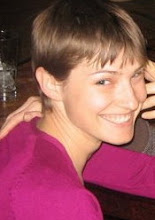Sunday
Reflections: Ragtime
Thirty-five years after its publication, E.L. Doctorow's Ragtime still speaks to readers. It is on the list of "1001 Books You Must Read Before you Die" and was voted one of Time Magazine's best 100 books of the 20th century. Its tale about the American era between the turn of the century and the nation's entry into WWI weaves together concerns and beliefs very much in the fore of American popular discourse today: immigration, capitalism, race relations, patriotism, the gap between the lifestyles of the very rich and the very poor. The scope feels broad, epic even. And for me, at least, this is the book's downfall. It reads like a writing exercise more than a novel, like Doctorow joined a microfiche exploration with a healthy imagination in search of a a plausible story. It only succeeds to a point, and the weakest sections are those least connected to the section of the story that gives the novel its title. In this strand, a black ragtime musician launches a life- unraveling spree of violence after becoming the victim of a vicious act of racism. This part of Doctorow's story, from start to finish, is fascinating, but it loses force of purpose from the penumbra of other stories that lead the reader to constantly try to connect one character to the next. While I try to discern the narrative importance of a luncheon shared by an investor and Henry Ford, the details that would radicalize a young man with a penchant for weapon design slip past, thus making the denouement hardly credible.
The novel begins with a murder: a wealthy sadist has killed the famous architect lover of his opportunistic wife. We are asked to care about this matter because: a> the sadist sees Houdini escape from a cell and later performs the same trick to free himself; b> the architect happened to design some of the buildings in which the action takes place--including the library of Pierpont Morgan; c> the wife, freed by a gunshot from both men with a claim to her finds herself at liberty to pick up with the younger brother of the family that will take in the illegitimate child of the ragtime musician. In the scope of the true core of the narrative, only the younger brother matters. Murder, wife, capitalist, sadistic husband, architect lover, and famous magician: all to no real end. This opening gambit displays the characteristic inefficiency that steers the novel.
Now, one could argue that to focus on plot and its necessary characters and scenes in such a concentrated manner is to take a very narrow view of the art of the novel and of Ragtime in particular. The appearances of Pierpont and Houdini, however tangential they might seem, paint the background of the extraordinary moment in American history in which the action unrolls. You have the great entrepreneurial spirit of Pierpont, with his unparalleled commercial success in all manner of capital ventures. His embarrassment of riches and lack of intellectual competition send him on a spiritual journey to fill his time and his desire for something to truly matter. Boo capitalism. Likewise Houdini seeks the extraordinary (like learning to fly a bi-plane) because these decades are rife with possibility, with arctic adventures and new inventions. But these stories are not presented as background information. In terms of space and depth, the stories of Pierpont and Houdini receive just as much attention as those of anyone else--including the ragtime musician, thus creating a Picasso-esque distortion of perspective.
In short, the novel seems to lack a core, both of focus and of point of view. And while we may take pleasure in the snappy dialogue of Emma Goldman or the plucky spirit of the system-bucking immigrant Tateh, the value of Ragtime as a whole is much less than the sum of its parts.
Subscribe to:
Comments (Atom)



